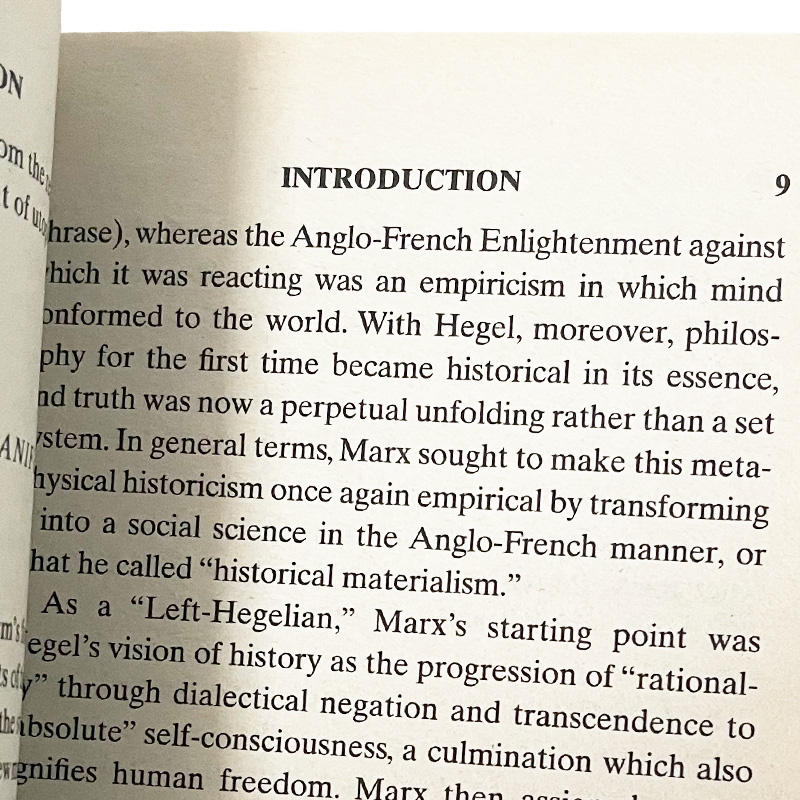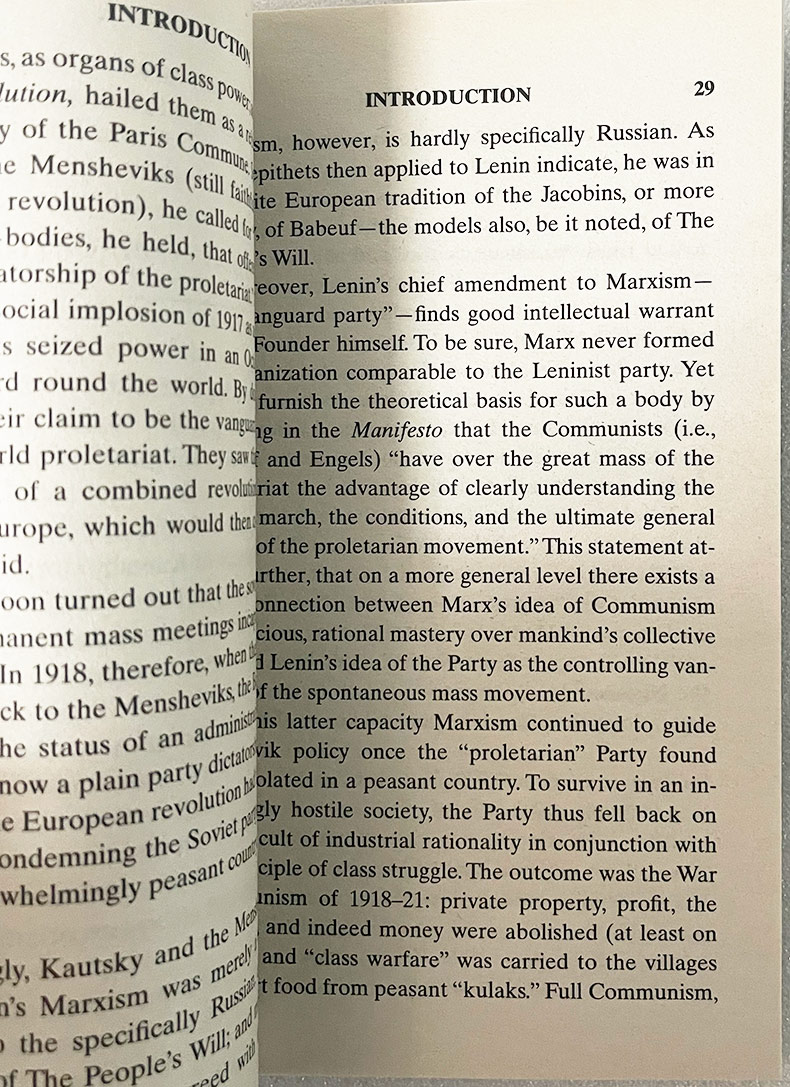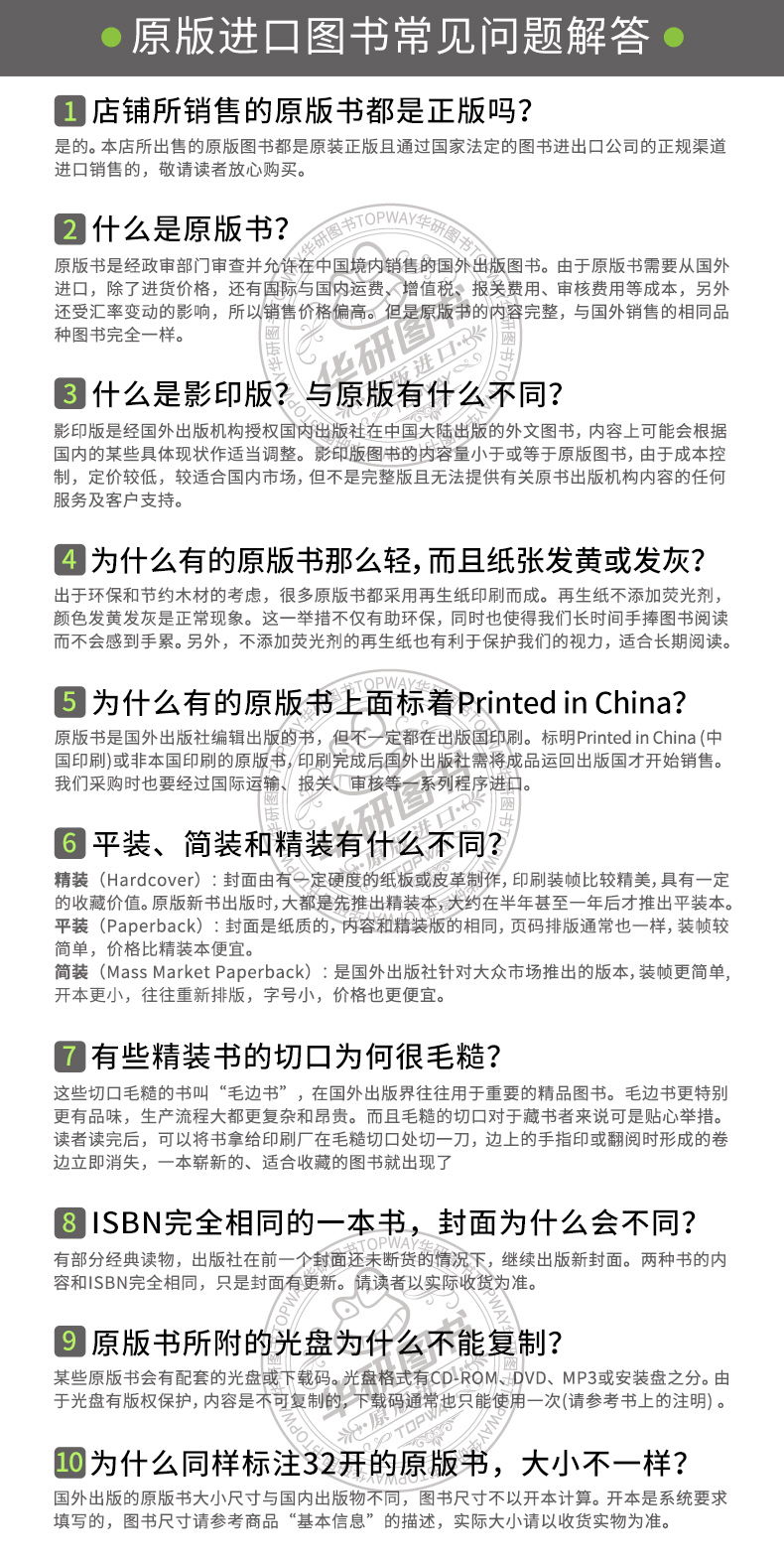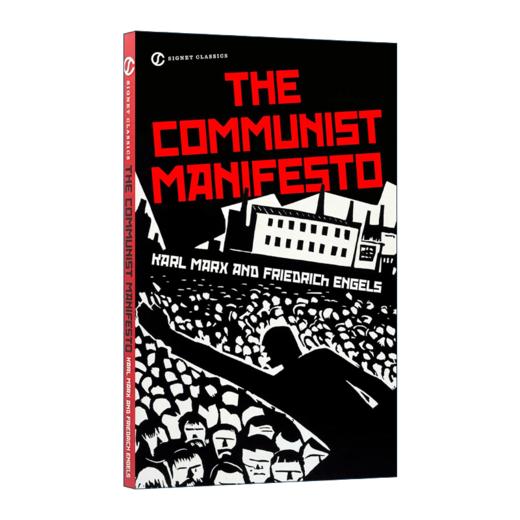正版 共产党宣言 英文原版 The Communist Manifesto 马列主义经典 马克思恩格斯 英文版进口书籍
| 运费: | ¥ 0.00-999.00 |
| 库存: | 216 件 |
商品详情




 书名:The Communist Manifesto 共产党宣言
书名:The Communist Manifesto 共产党宣言
难度:Lexile蓝思阅读指数1360L
作者:Karl Marx卡尔·马克思,Friedrich Engels费里德里希·恩格斯
出版社名称:Signet Classics
出版时间:2011
语种:英文
ISBN:9780451531841
商品尺寸:10.6 x 1 x 17.3 cm
包装:简装
页数:128 (以实物为准) The Communist Manifesto《共产党宣言》是卡尔·马克思和费里德里希·恩格斯为共产主义者同盟(Communist League)起草的纲领,国际共产主义运动第1个纲领性文献,阐述了阶级矛盾对人类历史的影响,马克思主义诞生的重要标志。由马克思执笔写成。1848年2月21日在伦敦第1次以单行本问世。2月24日,《共产党宣言》正式出版。宣言首次全面系统地阐述了科学社会主义理论,指出共产主义运动将成为不可抗拒的历史潮流。
The Communist Manifesto《共产党宣言》是卡尔·马克思和费里德里希·恩格斯为共产主义者同盟(Communist League)起草的纲领,国际共产主义运动第1个纲领性文献,阐述了阶级矛盾对人类历史的影响,马克思主义诞生的重要标志。由马克思执笔写成。1848年2月21日在伦敦第1次以单行本问世。2月24日,《共产党宣言》正式出版。宣言首次全面系统地阐述了科学社会主义理论,指出共产主义运动将成为不可抗拒的历史潮流。
本书为Signet Classics推出的英文版,该翻译版本起初在1872年至1888年之间出版,由恩格斯编辑并注释,是公认的权威译本。本书另补充Martin Malia所作导言,Stephen Kotkin 写的后记。书本小巧便携,内容完整无删减。
Featuring an extensive, provocative introduction by historian Martin Malia, this authorized English translation of The Communist Manifesto, edited and annotated by Engels, with prefaces to editions published between 1872 and 1888, provides a new opportunity to examine the document that shook the world.
In 1848, two young men published what would become one of the defining documents of modern history, The Communist Manifesto. It rapidly realigned political faultlines all over the world and its aftershock resonates to this day. In the many years since its publication, no other social program has inspired such divisive and violent debate. Ever since the collapse of the Soviet Union, the world’s first regime to adopt the Manifesto’s tenets, historians have debated its intent and its impact. In the current era of market democracy in Russia and Eastern Europe, nationalism on every continent, and an ever tightening global economy, does the specter of Communism still haunt the world? Were the seeds of Communism’s ultimate destruction already planted in 1848? Is there anything to be learned from Marx’s envisioned utopia?
With an Introduction by Martin Malia
and an Afterword by Stephen Kotkin  The Communist Manifesto《共产党宣言》是马克思、恩格斯为共产主义同盟撰写的纲领。在这个纲领性文献中,马克思、恩格斯科学地评价了资产阶级的历史作用,揭示了资本主义的内在矛盾,论述了无产阶级作为资产阶级的掘墓人的伟大历史使命,揭示了资本主义必然灭亡和共产主义必然胜利的历史规律,指出:共产主义的特征并不是要废除一般的所有制,而是要废除资产阶级所有制,共产主义不仅要同传统的所有制关系实行彻底的决裂,而且要同传统的观念实行彻底的决裂。共产主义的新社会将是这样一个联合体,在那里每个人的自由发展是一切人的自由发展的条件。
The Communist Manifesto《共产党宣言》是马克思、恩格斯为共产主义同盟撰写的纲领。在这个纲领性文献中,马克思、恩格斯科学地评价了资产阶级的历史作用,揭示了资本主义的内在矛盾,论述了无产阶级作为资产阶级的掘墓人的伟大历史使命,揭示了资本主义必然灭亡和共产主义必然胜利的历史规律,指出:共产主义的特征并不是要废除一般的所有制,而是要废除资产阶级所有制,共产主义不仅要同传统的所有制关系实行彻底的决裂,而且要同传统的观念实行彻底的决裂。共产主义的新社会将是这样一个联合体,在那里每个人的自由发展是一切人的自由发展的条件。
 Karl Marx (1818-1883) was born in Trier to a German Jewish family that had converted to Christianity. As a student he was influenced by Hegel’s dialectical philosophy but later reacted against his mentor’s idealism and turned instead to the then new socialist movement. The Communist Manifesto (utilizing drafts by his friend Friedrich Engels) was written in a creative burst in Brussels for a German emigré society, the Communist League. After taking part in the failed revolutions of 1848, Marx fled to London, where he and his family lived in poverty alleviated only by Engels’ financial help. For some years, Marx was a London correspondent for a New York newspaper. He spent most of his time, however, researching in the British Museum to document his theories of class struggle and the “internal contradictions” undermining capitalism. His works include: The Poverty of Philosophy, The Eighteenth Brumaire of Louis Bonaparte, The German Ideology, and A Contribution to the Critique of Political Economy.
Karl Marx (1818-1883) was born in Trier to a German Jewish family that had converted to Christianity. As a student he was influenced by Hegel’s dialectical philosophy but later reacted against his mentor’s idealism and turned instead to the then new socialist movement. The Communist Manifesto (utilizing drafts by his friend Friedrich Engels) was written in a creative burst in Brussels for a German emigré society, the Communist League. After taking part in the failed revolutions of 1848, Marx fled to London, where he and his family lived in poverty alleviated only by Engels’ financial help. For some years, Marx was a London correspondent for a New York newspaper. He spent most of his time, however, researching in the British Museum to document his theories of class struggle and the “internal contradictions” undermining capitalism. His works include: The Poverty of Philosophy, The Eighteenth Brumaire of Louis Bonaparte, The German Ideology, and A Contribution to the Critique of Political Economy.
Friedrich Engels (1820-1895) was born in Germany, the son of a textile manufacturer. After his military training in Berlin he became an agent of his father’s business in Manchester and immersed himself in Chartism and the problems of the new urban proletariat created by the industrial revolution. In 1844, the year he met Karl Marx, he wrote The Condition of the Working Class in England. The pair’s ideas were incorporated into The Communist Manifesto, although the actual writing was done by Marx. Not only did Engels provide Marx with money, but after 1870 spent much time assisting him in his research. After Marx’s death Engels continued his work on Das Kapital, and completed it in 1894, a year before his own death. He also wrote The Peasant War in Germany, The Origin of the Family, and Socialism, Utopian and Scientific.
Martin Malia did his undergraduate work at Yale and earned his Ph.D. at Harvard. He has spent most of his teaching career at the University of California at Berkeley. His principal works include Alexander Herzen and the Birth of Russian Socialism, 1812-1855, The Soviet Tragedy: A History of Socialism in Russia, 1917-1991, and Russia under Western Eyes: From the Bronze Horseman to the Lenin Mausoleum.
Stephen Kotkin teaches history and international affairs at Princeton. His books include Armageddon Averted: The Soviet Collapse 1970-2000 and Uncivil Society: 1989 and the Implosion of the Communist Establishment. He formerly directed Princeton’s Russian and Eurasian studies program (1996-2009) and served as the regular business book reviewer for the New York Times Sunday Business section (2006-2008). He founded and runs Princeton’s Global History initiative.
 I. BOURGEOIS AND PROLETARIANS*
I. BOURGEOIS AND PROLETARIANS*
The history of all hitherto existing society is the history of class struggles.
Freeman and slave, patrician and plebeian, lord and serf, guild-master* and journeyman, in a word, oppressor and oppressed, stood in constant opposition to one another, carried on an uninterrupted, now hidden, now open fight, a fight that each time ended, either in a revolutionary re-constitution of society at large, or in the common ruin of the contending classes.
In the earlier epochs of history, we find almost everywhere a complicated arrangement of society into various orders, a manifold gradation of social rank. In ancient Rome we have patricians, knights, plebeians, slaves; in the Middle Ages, feudal lords, vassals, guild-masters, journeymen, apprentices, serfs; in almost all of these classes, again, subordinate gradations.
The modern bourgeois society that has sprouted from the ruins of feudal society has not done away with class antagonisms. It has but established new classes, new conditions of oppression, new forms of struggle in place of the old ones.
Our epoch, the epoch of the bourgeoisie, possesses, however, this distinctive feature: it has simplified the class antagonisms: Society as a whole is more and more splitting up into two great hostile camps, into two great classes directly facing each other: Bourgeoisie and Proletariat.
From the serfs of the Middle Ages sprang the chartered burghers of the earliest towns. From these burgesses the first elements of the bourgeoisie were developed.
The discovery of America, the rounding of the Cape, opened up fresh ground for the rising bourgeoisie. The East-Indian and Chinese markets, the colonisation of America, trade with the colonies, the increase in the means of exchange and in commodities generally, gave to commerce, to navigation, to industry, an impulse never before known, and thereby, to the revolutionary element in the tottering feudal society, a rapid development.
The feudal system of industry, under which industrial production was monopolised by closed guilds, now no longer sufficed for the growing wants of the new markets. The manufacturing system took its place. The guild-masters were pushed on one side by the manufacturing middle class; division of labour between the different corporate guilds vanished in the face of division of labour in each single workshop.
Meantime the markets kept ever growing, the demand ever rising. Even manufacture no longer sufficed. Thereupon, steam and machinery revolutionized industrial production. The place of manufacture was taken by the giant, Modern Industry, the place of the industrial middle class, by industrial millionaires, the leaders of whole industrial armies, the modern bourgeois.
Modern industry has established the world-market, for which the discovery of America paved the way. This market has given an immense development to commerce, to navigation, to communication by land. This development has, in its turn, reacted on the extension of industry; and in proportion as industry, commerce, navigation, railways extended, in the same proportion the bourgeoisie developed, increased its capital, and pushed into the background every class handed down from the Middle Ages.
We see, therefore, how the modern bourgeoisie is itself the product of a long course of development, of a series of revolutions in the modes of production and of exchange.
- 华研外语 (微信公众号认证)
- 本店是“华研外语”品牌商自营店,全国所有“华研外语”、“华研教育”品牌图书都是我司出版发行的,本店为华研官方源头出货,所有图书均为正规正版,拥有实惠与正版的保障!!!
- 扫描二维码,访问我们的微信店铺
- 随时随地的购物、客服咨询、查询订单和物流...











